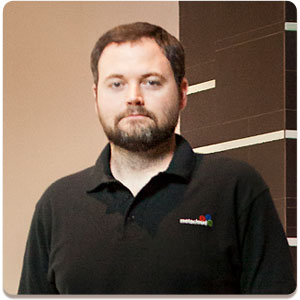
The popularity of cloud storage is growing rapidly, and few would deny that open source technology is driving individual and business users to the clouds in droves.
Yet enterprise adoption decisions are often hindered by competing technologies for public and private clouds. Often, it is less a question of open or closed source and more an issue of service and cost.

Then factor in the added confusion that sets in over deciding between on-premises in a cloud-like environment and off-premises storage. Clearly, the freedom and innovation brought by the OpenStack option brings cloud users a healthy open source solution.
Metacloud‘s founders, however, bet their own cloud concept on the notion that the hugely popular Open Stack technology was broken and will never be fixed. Rather, they were convinced open source cloud users would be better served by an enhanced version of OpenStack. Specifically, they wanted an tweaked alternative that brought an Amazon EC2-like environment without the hardware and software nightmares.
In this interview, LinuxInsider talks to Metacloud cofounder and president Steve Curry about how on-premises cloud storage is changing the landscape of both public and private cloud usage and altering the open source model.
LinuxInsider: What are the big misconceptions that companies and individual users have about OpenStack?
Steve Curry: I think there is a big misconception among people asking about OpenStack’s readiness for enterprise. I must see an article per week with people saying, “Is OpenStack ready yet?” That dialogue is just wrong.
People have been running a large enterprise client on OpenStack with large-scale footprint for well over a year without issue. So it is a profound misconception to say that OpenStack is not ready. On the storage side, it is not a technical problem. It is really a cultural issue.
LI: What does the OpenStack community have to do to fix that?
Curry: I think a couple of things have to happen. The enterprise IT group either needs to adopt to a notion that IT is no longer needed with cloud storage, or the storage solution needs to hone and adapt products to penetrate that cultural paradigm which already exists.
LI: So, did you set out to fix what was partially broken with OpenStack or just replace it?
Curry: It was just that the IT teams embarking on using it just did not have the needed skill sets to execute on it. So we focused on how do you make OpenStack available to deploy from day one without the IT teams having to understand something so complex on that deep of a level when they had a million other things going on. So that is what led to the service offering. We said, let’s take on the initial OpenStack deployment and let’s take on all the subsequent patches and feature enhancements.”
LI: What differentiates this new concept of on-premises cloud storage from the classic approach of storing data locally?
Curry: What we are seeing is enterprise running bare metal on their existing servers. When they are running just bare metal without virtualization, they are sitting at about 10 or 15 percent utilization across the servers in their data bank. They are not really getting much benefit from their capital investment. The promise of virtualization was to drive up utilization. With that we are seeing utilization climb to maybe 30 or 40 percent, but that is not really delivering what it is supposed to.
With OpenStack, right from the beginning every single component in the entire stack employs a high tenancy model. What does that mean? It means not optimizing server utilization on a per-server basis anymore. You can aggregate all of these servers you already own together when you need it. You can drive up utilization to 85 percent. So that is what on-prem clouds are all about. They deliver an economic value-add. You get out of it the ability to exploit your existing servers to the fullest.
LI: So this is a better performance model without new hardware purchases?
Curry: It does not fit a pre-existing pattern. People are used to a private cloud or a public cloud with one being on-prem and the other being off-prem. Think about a world where there is a massive amount of pre-existing infrastructure, and it can all be converted into a public cloud-like experience. But you do not have to pay the penalty of outsourcing to Amazon your servers that you already own. The economic benefits are pretty massive.
LI: What does the OpenStack community need to do to remain successful and fix the weaknesses you pointed out to expand its role as a cloud storage platform base?
Curry: I think we can tell you what needs to be done, but I do not see it ever happening. What needs to be done is all the vendors need to make a concerted effort to make OpenStack easy to install and easy to operate and add feature development and feature enhancement. At the cost of worrying about keeping up with and surpassing everybody on the feature consumption, I do not ever see that happening.
I think there is no incentive, financial or otherwise, for the commercial entities behind OpenStack or the core software development group to stop what they are doing and make this thing incredibly easy from the consumer’s point of view. If they want to catch up with EC2 from a feature parity point of view, they will want to surpass EC2 and put Amazon in a position where they have to catch up. That is where they both will be focused for near perpetuity.





















































